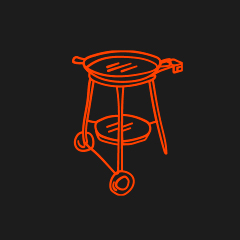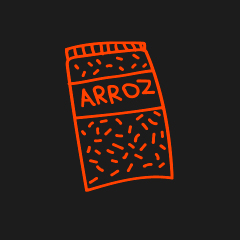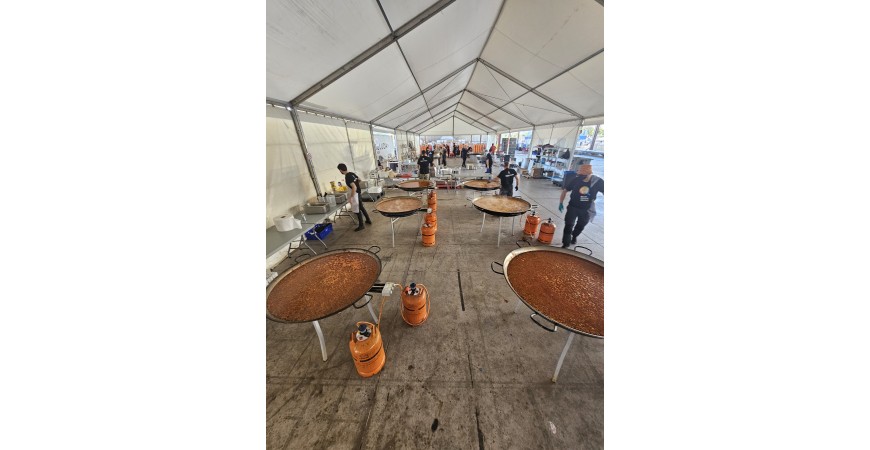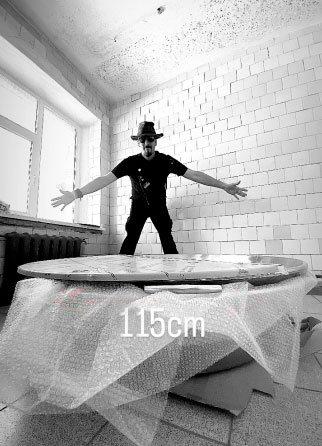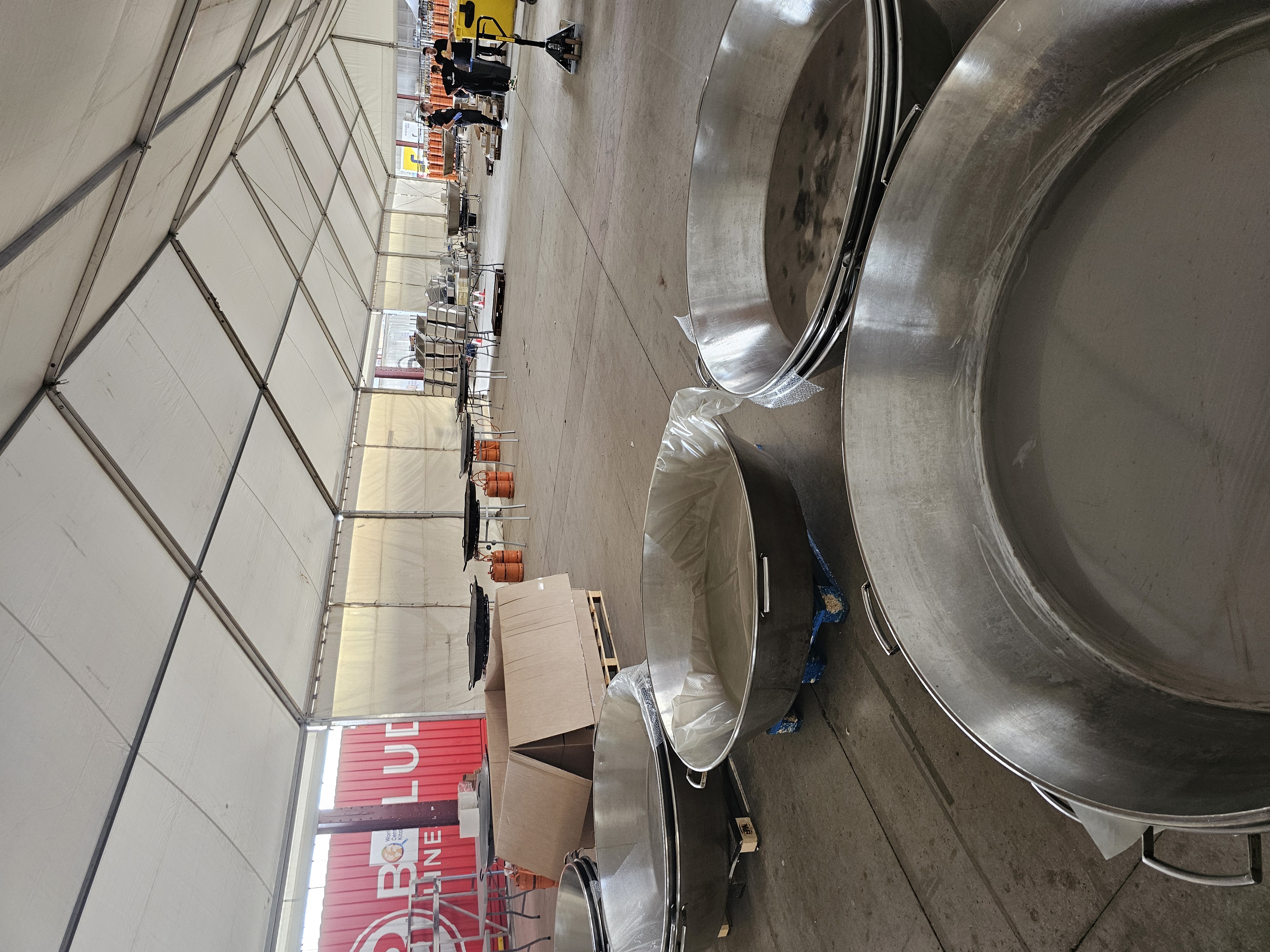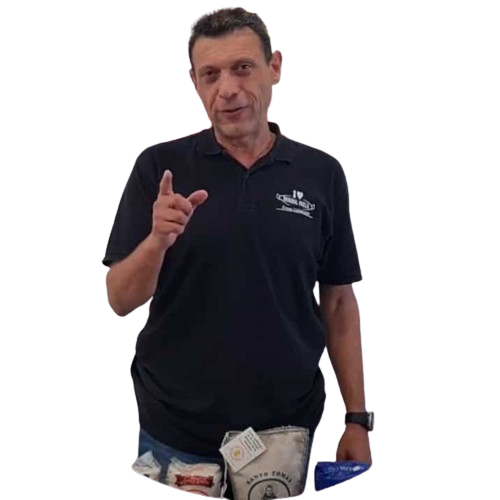Paellas gigantes en la ayuda humanitaria
Field kitchen with its corner of traditional and tall paellas
Coincidence or Causality?
In this blog post we are going to talk about the benefits of using giant paellas in humanitarian aid and the organizations that already use them to promote and improve their aid capabilities.
We had been planning this blog post for some time, convinced of the help our giant paella pans, cauldrons, and burners provide during major global disasters. We never thought that just days after beginning its layout, disaster would strike our city. On Tuesday, October 29, an unprecedented storm (DANA) caused the Poio ravine to overflow, resulting in over 200 victims, 120,000 damaged vehicles, and hundreds of thousands of people isolated by the mud—many of them without drinking water, electricity, or communication. The affected people are slowly recovering from the event, cleaning streets and homes from mud, moving destroyed vehicles to allow aid to pass and to be able to leave their homes to get a hot meal to recover from the effort of trying to return their life to normal. It is in this context that giant paellas help mitigate the ravages of hunger in these areas.
This article originates from how our beloved giant paellas are the best way to feed thousands of people in the smallest possible space and with just a few gas cylinders, making them the ideal choice for field kitchens, emergency kitchens, military kitchens, charitable kitchens, etc.
We hope this blog post serves not only an informative purpose but also encourages those affected and all volunteers that the whole world is willing to help. Original Paella, along with other major organizations such as World Central Kitchen, are more than willing to contribute not only a single grain of rice but hundreds of thousands of grains, paellas, and equipment to ensure that those affected by the DANA get a hot meal for lunch and dinner throughout the recovery process.
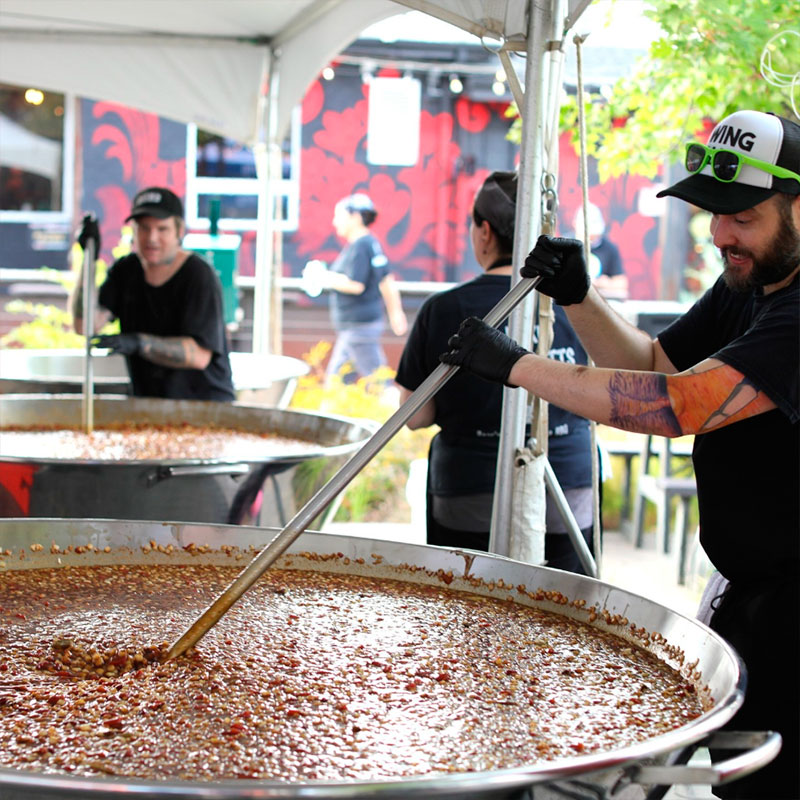
Giant paellas in Florida
Giant paellas in disasters
There are many events in the world that may require humanitarian aid: pandemics, famines, wars, large fires, floods, earthquakes, hurricanes, etc. Many of them are related to climate change, events that, unfortunately, will become more frequent over time.
How this aid is provided usually depends on the severity of the event, but a fundamental need for survival is the need to eat.
Whether canned, vacuum-packed, stored in sacks, containers, or brought in reinforced airtight bags, human beings need food to live, regardless of their current situation.
Even so, in difficult times, the simple act of having a hot meal, something we take for granted, becomes a real luxury when lacking water, gas, electricity, etc.
This is why we and many other humanitarian organizations are promoters of the use of giant paellas as a humanitarian aid tool. One of our most prominent clients is World Central Kitchen, which currently operates central kitchens similar to those in Valencia in other parts of the world such as Gaza, Ukraine, North Carolina, Florida, Lebanon, Tennessee, and Mexico.

A cook prepares a delicious meal in a tall giant paella
The benefits of giant paellas as humanitarian aid tools
Among so many possible cooking tools to use during a tragedy, why would we choose the paella? Although at first glance other tools such as pots or pans may seem more effective, the paella has multiple advantages that make it the ideal option to choose.
Useful for multiple types of dishes and meals
The paella is a very versatile tool that can be used for a wide range of recipes, dishes, and uses. It is not limited to rice dishes, which can be prepared in it with nearly infinite variations, but it can also be used to prepare other types of food in large portions if necessary: vegetables, meat, pasta...
The ability to cook so many different dishes in a single utensil, offering a high number of servings per person, makes the paella a humanitarian aid tool that can make use of a large variety of ingredients available or received in the affected area.
This also includes the possibility of offering a varied and appealing diet, including all necessary nutrients and proteins, as well as comfort food, typical dishes from the area and country that, in difficult times, are comforting by bringing memories of better times through familiar and homely flavors.
Large number of servings taking up little space
Beyond its recipe versatility, we highlight its ability to produce large quantities of servings using minimal space.
For example, a 150 cm giant paella, at full capacity, can provide 300 food servings—that is, it can feed up to 300 people in a single preparation. Now, multiply this number by the amount of paellas you have in the area... When we manufactured the 160 cm tall paella pan shown in the pictures, it had a depth of 31 cm, giving it a volume of 414 liters, which turns into over 800 complete servings with a single paella in one cooking cycle (approx. 2 hours). And if we have 10 paellas and do 4 cooking cycles a day? Simple: 800 servings x 10 paellas x 4 cycles = a total of 32,000 servings a day! And in a kitchen of barely 100 square meters of hot cooking space.
Simple transport and storage
Its transport and storage are relatively simple. Although its size is not the smallest among cooking utensils, it can be easily transported in a van. A very important feature is its ease of storage and logistics. As seen in the image below, unlike any pot or cauldron, the design of the paella (truncated conical) allows them to be stacked inside one another, making their storage very compact and logistics much cheaper than with straight-sided pots or pans, which cannot be nested.
This also facilitates transportation if used in a field kitchen, military kitchen, or war kitchen, which often need to be mobile to provide food to those in need and to their troops and team.
Multiple fuels for use
The paella can be used to cook with various fire sources. Normally, the cleanest, simplest, and safest way is using one of our burners for giant paellas that work with LPG gases (butane, propane, or natural gas), but they can also function even with wood fires.
The ability to use multiple fuel types and thus multiple fire sources means that the paella is a useful cooking tool regardless of the situation or fuel available in the area.
It should be noted that these giant paella setups, with more than 400 liters of volume, require very powerful gas burners, and it is important to consider the number of burners and their gas consumption. Depending on the required gas quantity per day, they can be powered by simple gas cylinders, fixed or mobile tanks with thousands of kg of gas, or even connecting many gas bottles in series (as we’ll see later), making them function as a single tank, with all the advantages in consumption, supply, space, etc. that this entails.
Which is the best paella to help?
Looking at the benefits of the giant paella, you are probably thinking that grabbing the biggest paella pan and using it to feed hundreds of people is the best choice—but this is not always the case. Different sizes and types of paella are best suited depending on the situation.
Affordable, functional equipment with great quality/price ratio:

Multiple shallow paellas ready for use in a field kitchen
With just a small investment of €800 we can acquire one of our kits including a 130 cm paella pan, 90 cm high-power gas burner with tripod and paddle, as shown in the 200-person paella kit. Similarly, we can find giant shallow paellas of larger sizes.
Professional equipment for large serving volumes
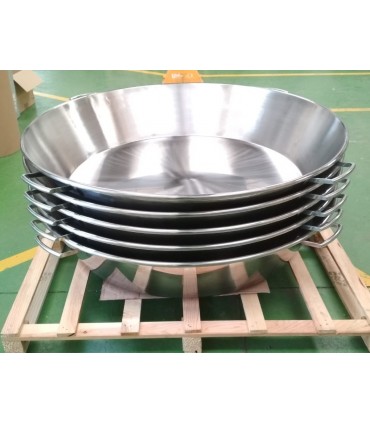
A "stack" of 160 cm tall giant paellas
Basically, the solution starts with our giant shallow paellas, which we have evolved by increasing their height or depth. This provides much greater volume and thus allows feeding hundreds of people. These are our tall giant paellas, whose added depth allows cooking not only rice but also stews, crumbs, gazpacho, boilers, and many other dishes that benefit from the ability to include a large amount of broth or ingredients.
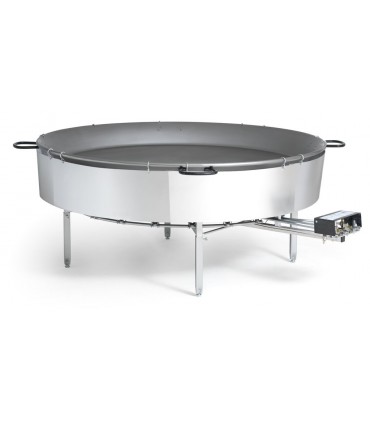
The windscreen for giant paellas in action
All of them can benefit from a windscreen for giant paellas, an almost essential accessory that prevents the wind from blowing out the gas burner flame, while increasing efficiency and optimizing gas consumption by creating an oven-like effect. It is also composed of separate pieces, so it can be disassembled and transported without taking up much space.

A kitchen truck during the DANA in Valencia
The Interior of a Kitchen Truck
Finally, we cannot overlook the trailers and kitchen trucks. As shown in this video, they offer everything necessary to operate a functional kitchen on wheels. These are incredibly effective humanitarian tools, but they do require a significant financial investment for both usage and manufacturing.
Paella: A Symbol of Global Humanitarian Aid
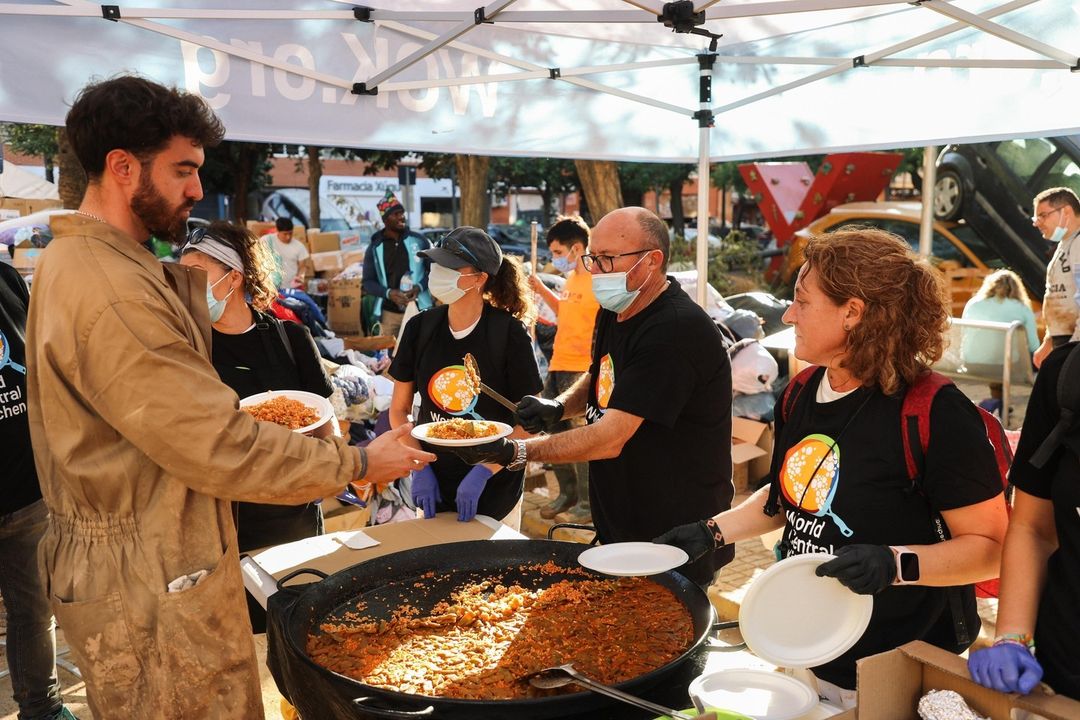
World Central Kitchen volunteers distributing paella portions
Over time, paella has become an increasingly popular tool in disaster relief operations. Organizations such as World Central Kitchen (WCK) have been using giant paella pans for years as part of their humanitarian efforts.
This organization was founded by chef José Andrés, who, after the 2010 Haiti earthquake, created WCK to provide something basic yet essential: food.
Since then, José Andrés and his team have been present in hundreds of countries, offering meals with a simple yet powerful motto: "When there’s hunger, send cooks. Not tomorrow, today." This rapid response, along with collaboration from local chefs and cooks in affected areas, has created supply networks that have fed hundreds of thousands of people.
Thanks to the experience and knowledge of WCK chefs and technicians, along with our own technical team, we conducted several tests and selected equipment based on suitability, size, burner power, number of servings, transportability, storage, and more. Today, our equipment can be found cooking in Florida, Ukraine, Gaza, Mexico, the Carolinas, and other locations, as shown here:
Florida
North Carolina

Poland
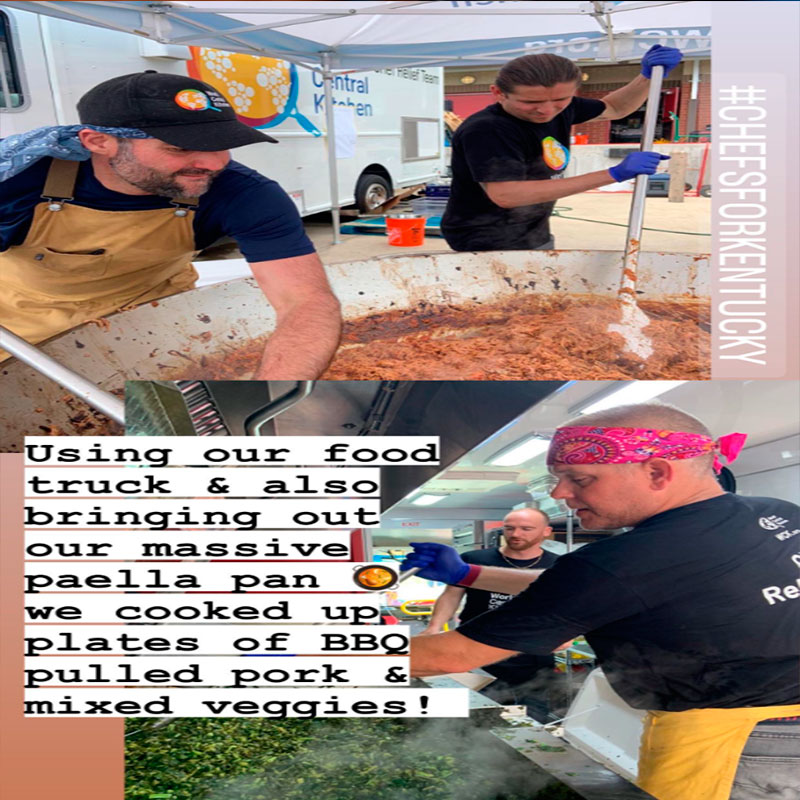
Kentucky
Ukraine
And this time, we are doing it in our own country. But we didn’t want to limit our help to just sending equipment...
Original Paella – Adding Our Grain of Rice
After the DANA storm disaster in Valencia, in just a few hours, and recognizing the urgent need to provide something as simple yet valuable as a hot meal, our company received an offer to set up our giant paella equipment in one of the access halls of the Levante Stadium (Ciutat de Valencia). Once the space was secured, we called on everyone who could help—cooking, donating food, preparing ingredients, or delivering meals using their cars, vans, and 4x4s.

Multiple paellas ready to be used at the Levante Stadium
One of the few positive outcomes of this disaster was witnessing our society’s capacity to respond and mobilize. The initiative received overwhelming support, with up to 700 volunteers joining the network. It was self-managed by people eager to help, and with enthusiasm and common sense, we built a network that served over 5,000 meals on the first day alone—eventually reaching a peak of 17,000 meals per day. Influencers joined the movement, acting as powerful voices to cover urgent needs (butane, rice, containers, etc.), along with other organizations like the “Solidarity Chefs.”
Another pleasant surprise was seeing a responsible and committed youth. Far from screens and gaming consoles, they stood shoulder to shoulder with us from dawn to dusk. This generation gives us hope for the future. A perfect example is the story of Iban and Pablo: see more
Packaging portions into containers for DANA storm victims
After 10 days at the Levante Stadium and over 120,000 servings cooked, we realized this would not be resolved in just a few days. We requested a more permanent setup at Feria Valencia, which allowed us to continue serving thousands of hot meals. To date, over 200,000 portions have come from our paellas, led by master rice chefs Iban Soriano and Juan Rocafull, with the help of tireless volunteers and donations from businesses—together, we made this little “miracle” happen.
In parallel, we worked with the UME (Emergency Military Unit), repairing and checking burners in record time to ensure they were ready the next day. For this, the UME awarded us with their medal—an honor we are deeply grateful and proud of.
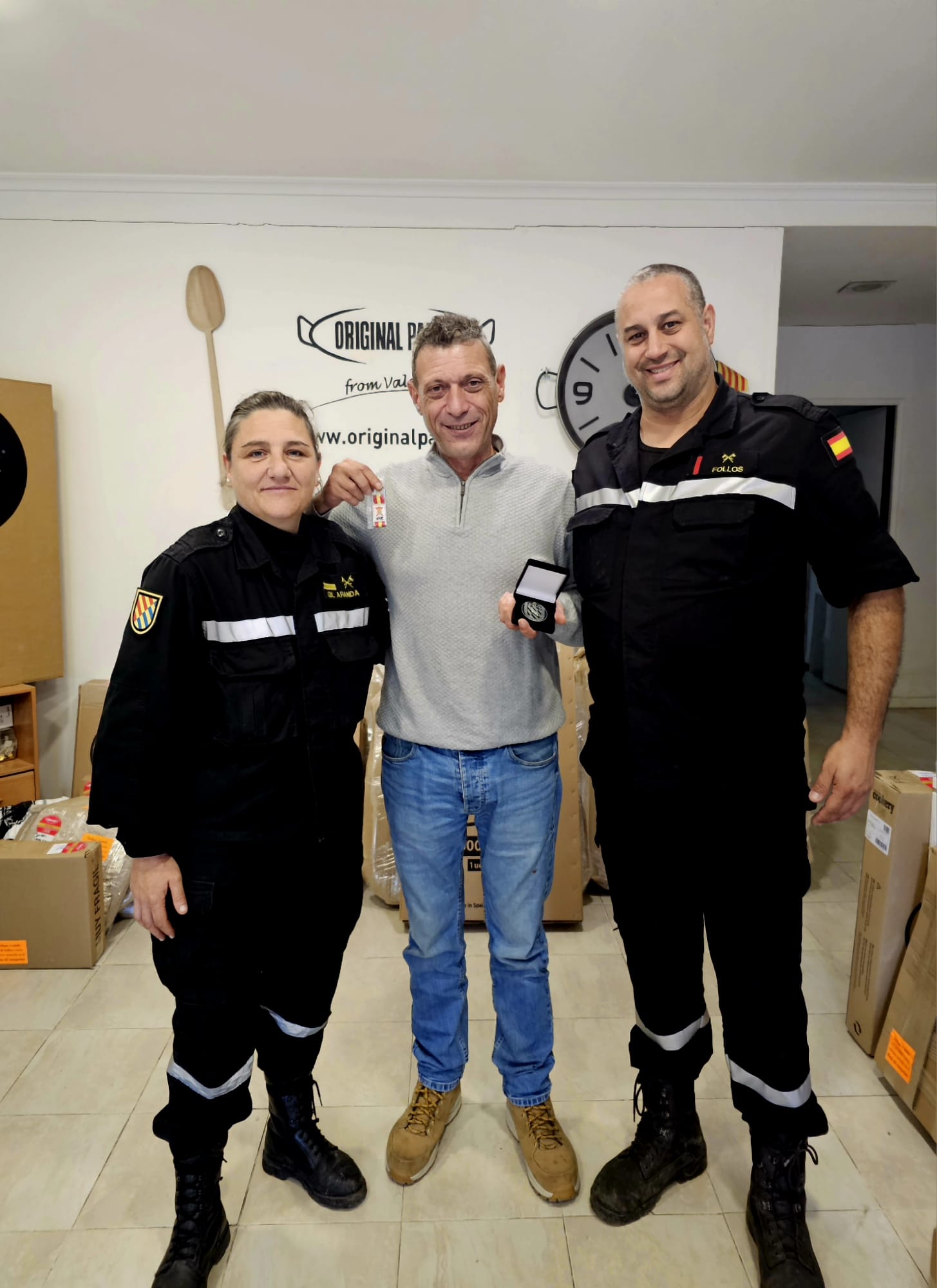 Our manager, Javier Baixauli, receives the UME medal alongside two operatives
Our manager, Javier Baixauli, receives the UME medal alongside two operatives
Simultaneously, we partnered with the world’s leading organization in these situations—World Central Kitchen—helping install and assist with our burners and giant paella pans so they could be operating at full capacity quickly. In just four days, an empty lot at Shed 2 in Valencia’s port became a full-fledged field kitchen capable of preparing 30,000–40,000 meals per day.
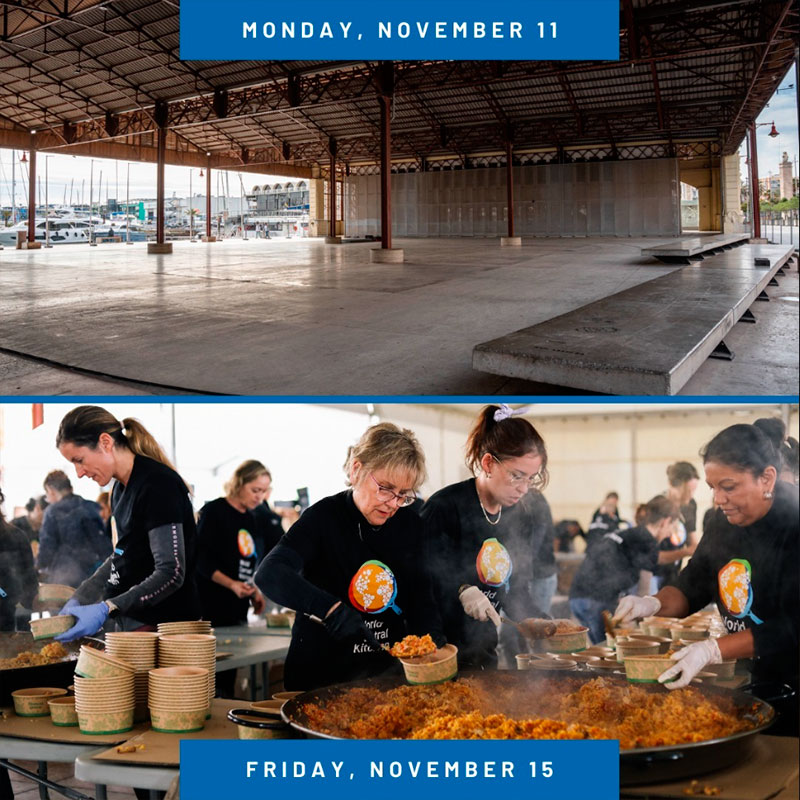
Only four days to build a kitchen producing nearly 50,000 daily servings
It’s worth noting that, together with other manufacturers like Flames VLC and Vaello "La Valenciana", and through our donations, we created a traditional paella corner in WCK’s field kitchen. It was important not only to provide variety in the meals, but to also make them culturally appealing—and what’s more appealing to a Valencian than a dish of paella?

You can’t miss paella when feeding thousands of Valencians affected by the DANA storm
The truth is that messages like the one in this video are the real reason and gratitude behind our collaboration.
It fills our hearts with joy to hear these words
If you click this link, you can visually see a whole month of work, followed by:
How to set up a field kitchen (with Original Paella)
Everything looks delicious
The first step is to locate the facilities. These must have sufficient capacity to meet the intended goal, be strategically located, and allow access for large trucks needed for supplies.
Before setting up the tent, the first task was to bring in and set up the equipment. In this case, we assembled a total of 13 paella setups, including tall 160 cm pans (800 servings per paella per cycle), cooked with eight high-power 120 cm burners. There's also the paella corner, featuring eight high-power 90 cm burners with 130 cm pans capable of cooking up to 300 servings in a single cycle. Here we can see our team preparing the first burners.

With the equipment ready, we couldn't forget the fuel to power this operation. With all the setups running, it requires 550 kilos of gas per day! That’s the equivalent of more than 42 gas cylinders daily to power these 16 burners. To improve efficiency and facilitate logistics and daily gas replenishment, we connected multiple large propane gas cylinders in series. This way, all gas burners are fed by all the cylinders as if they were one single fuel tank that we can replace when necessary.
Each one will serve 800 portions per service

It didn’t take us long to have all the burners connected and ready. Immediately afterward, together with the World Central Kitchen team, we began unpacking the paella pans and the rest of the equipment, organizing everything into rows, ingredient prep tables, utensils...
They’re so big you could almost climb in to clean them
A cleaning station is a must to scrub and shine the paella pans before they’re reused—so big that it takes two people just to clean one of them.
But let’s not let just this text and its images tell the story. Below, we’ve included a video showing the preparation of field kitchens in collaboration with Original Paella and World Central Kitchen.
See this post on Instagram

